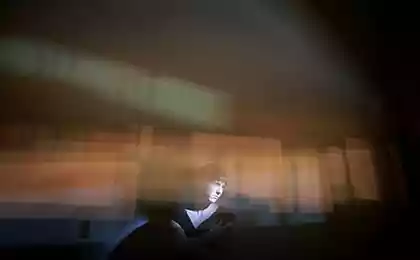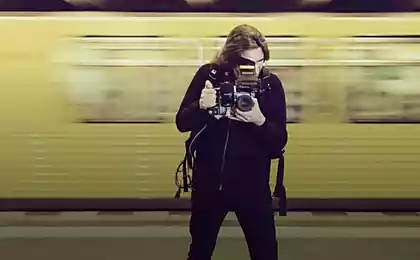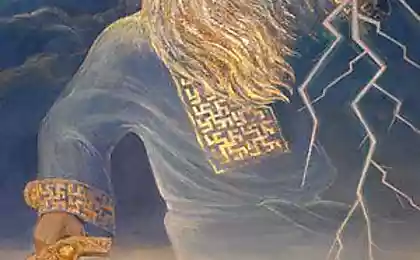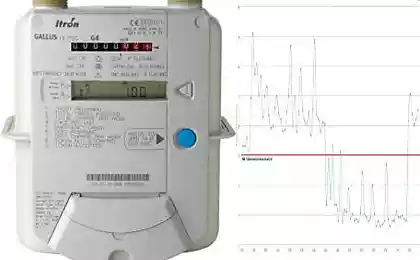543
These images show how autistic people see the world
They usually do not look in the face, fixated on a certain action, they are more responsive to a variety of stimuli and have difficulty with social interaction. People suffering from autism.
Scientists are conducting various tests to determine the causes of the disease and its effective treatment. But this time, the study is intended to help each person see the world as it appears to people with autism spectrum disorders (ASD/ASD).
In a study published in the October issue of the journal Neuron, was attended by 39 people. Half of them are officially diagnosed with autism, the other half – "neurotypical" (those who do not have Asperger's syndrome or other disorders of the autism spectrum, persons with Asperger's syndrome called "neurotypical", in English "neurotypical" or abbreviated as NT, although in English the same word derisively called persons of average intelligence, from about 80 to 110, that is, ordinary people.) All the subjects showed 700 different images and sensors that determine the direction of gaze, fixed region, which drew the attention of participants in both groups.
"Among other conclusions, our work points to the fact that things are not so simple. People with autism spectrum disorders not only look at the face. They look at most things," – said in a press release, study co-author Ralph Adolphs (Ralph Adolphs), a neuroscientist from the California Institute of technology.
Red areas in the images is the most visible area, which is constantly directed gaze of the subjects.
Images that lookedautistic on the left, and neurotypical on the right.
According to the study, people with autism usually focus on the center of the image. Even when the frame contains other objects.
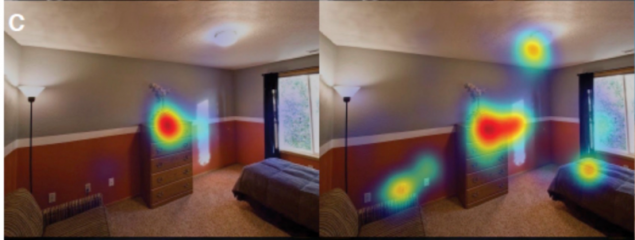
Autistic people look away to the edge of the frame to not look at faces.
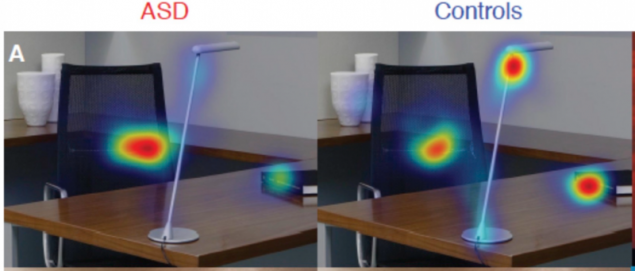
Autism – from left, neurotypical on the right.
Participants were asked to consider each image for three seconds, so imprinted results first instinctive impulse.
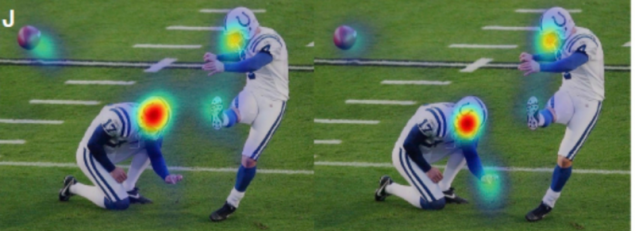
Autistic people are usually not looking at people in photos, unlike neurotypical.
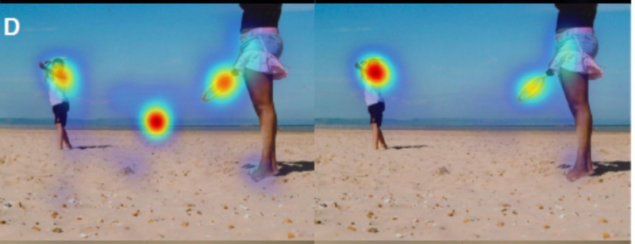
In this picture you can see how different it distributed the attention of the participants of the experiment in both groups.
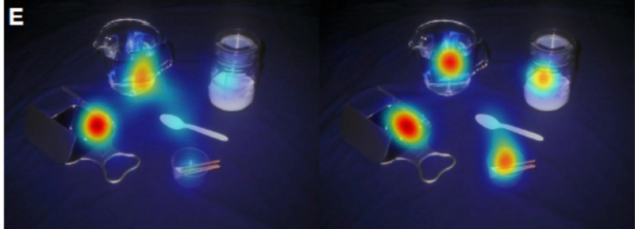
In the U.S., autism affects about one child in 68. Perhaps the figure has grown due to new diagnostic criteria and resulting in a sharp increase in awareness.
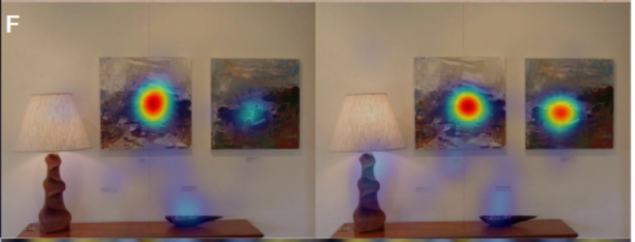
The doctors took a step forward in diagnosing children with the disorder, but it's still not an easy task.
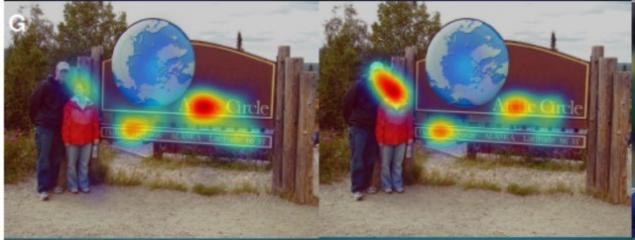
Researchers are looking for ways to diagnose autism as early as possible. This can help track the direction of gaze.
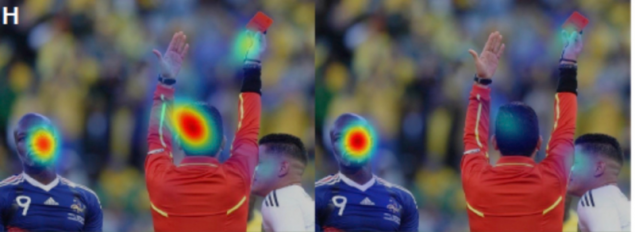
For example, the project BabySibs uses sensors to track your gaze to reveal differences between children with autism and neurotypical.
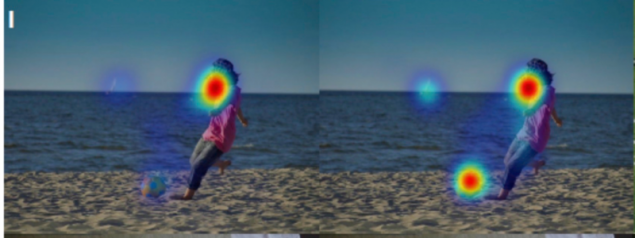
Source: BabySibs
The researchers found that children with autism prefer to look at scrambled faces, instead of the usual photos.

Source: BabySibs
Infants with autism prefer to listen to the sounds generated by the computer, not words. This is still one of the conclusions of the project BabySibs.
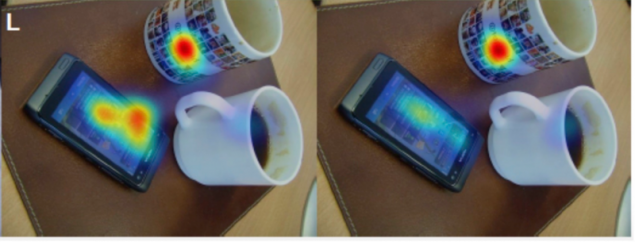
Source: 2013 study
The sooner doctors and parents will be able to identify the child's autism, the sooner you will be able to provide the support necessary for the conduct of a more fulfilling lifestyle.
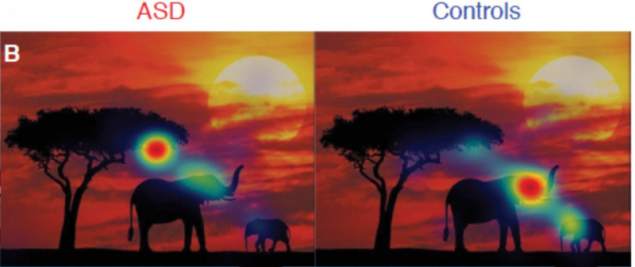
Autism – from left, neurotypical on the right. published
P. S. And remember, just changing your mind — together we change the world! ©
Join us in Facebook , Vkontakte, Odnoklassniki
Source: cameralabs.org/9363-eti-izobrazheniya-pokazyvayut-kak-autisty-vidyat-mir
Scientists are conducting various tests to determine the causes of the disease and its effective treatment. But this time, the study is intended to help each person see the world as it appears to people with autism spectrum disorders (ASD/ASD).
In a study published in the October issue of the journal Neuron, was attended by 39 people. Half of them are officially diagnosed with autism, the other half – "neurotypical" (those who do not have Asperger's syndrome or other disorders of the autism spectrum, persons with Asperger's syndrome called "neurotypical", in English "neurotypical" or abbreviated as NT, although in English the same word derisively called persons of average intelligence, from about 80 to 110, that is, ordinary people.) All the subjects showed 700 different images and sensors that determine the direction of gaze, fixed region, which drew the attention of participants in both groups.
"Among other conclusions, our work points to the fact that things are not so simple. People with autism spectrum disorders not only look at the face. They look at most things," – said in a press release, study co-author Ralph Adolphs (Ralph Adolphs), a neuroscientist from the California Institute of technology.
Red areas in the images is the most visible area, which is constantly directed gaze of the subjects.
Images that lookedautistic on the left, and neurotypical on the right.
According to the study, people with autism usually focus on the center of the image. Even when the frame contains other objects.

Autistic people look away to the edge of the frame to not look at faces.

Autism – from left, neurotypical on the right.
Participants were asked to consider each image for three seconds, so imprinted results first instinctive impulse.

Autistic people are usually not looking at people in photos, unlike neurotypical.

In this picture you can see how different it distributed the attention of the participants of the experiment in both groups.

In the U.S., autism affects about one child in 68. Perhaps the figure has grown due to new diagnostic criteria and resulting in a sharp increase in awareness.

The doctors took a step forward in diagnosing children with the disorder, but it's still not an easy task.

Researchers are looking for ways to diagnose autism as early as possible. This can help track the direction of gaze.

For example, the project BabySibs uses sensors to track your gaze to reveal differences between children with autism and neurotypical.

Source: BabySibs
The researchers found that children with autism prefer to look at scrambled faces, instead of the usual photos.

Source: BabySibs
Infants with autism prefer to listen to the sounds generated by the computer, not words. This is still one of the conclusions of the project BabySibs.

Source: 2013 study
The sooner doctors and parents will be able to identify the child's autism, the sooner you will be able to provide the support necessary for the conduct of a more fulfilling lifestyle.

Autism – from left, neurotypical on the right. published
P. S. And remember, just changing your mind — together we change the world! ©
Join us in Facebook , Vkontakte, Odnoklassniki
Source: cameralabs.org/9363-eti-izobrazheniya-pokazyvayut-kak-autisty-vidyat-mir


